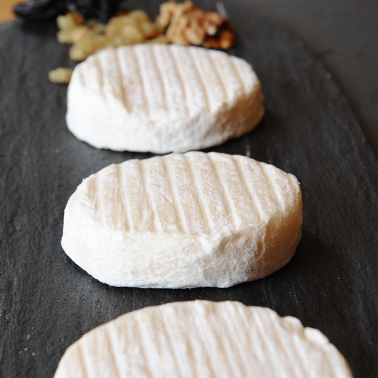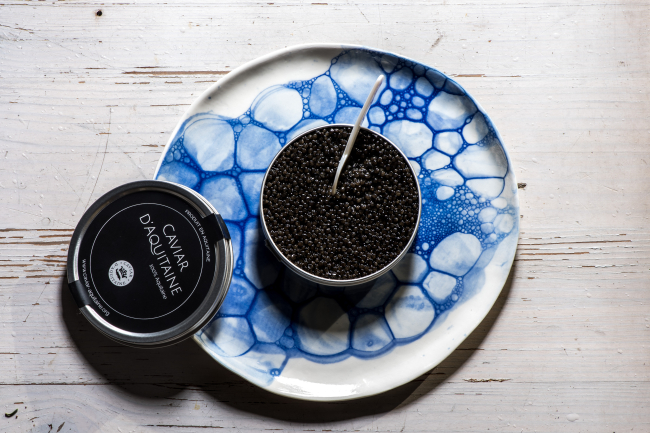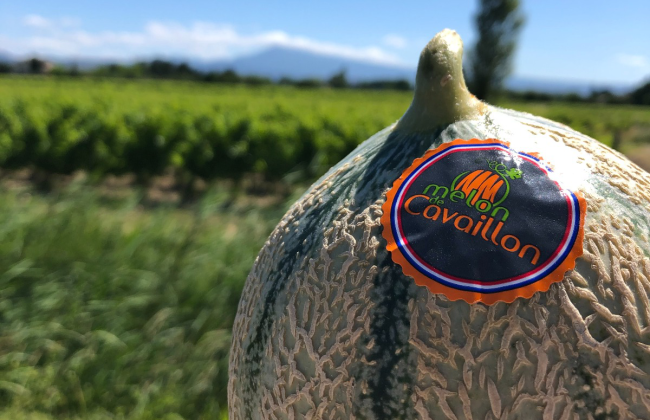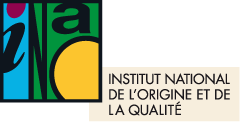News
Discover the 21 new SIQO products recognized in 2023
In 2023 the INAO was pleased to welcome 21 new products to the large family of products under official signs of identification of quality and origin. This record number of recognitions demonstrates producers' confidence in state-recognized signs, and the guarantees they provide, both for themselves and for consumers.
6 products registered as Protected Designations of Origin (PDO)
The Protected Designation of Origin (PDO) designates a product in which all stages of production are carried out according to a recognized savoir-faire in the same geographical area, which gives the product its characteristics. It is a European sign that protects the product's name throughout the European Union. The rules for producing a PDO are set out in a specification and are subject to inspection procedures, implemented by an independent body approved by the INAO.
The "Châtaigne des Cévennes" PDO registered on January 16
Adapted to the Mediterranean climate, its environmentally-friendly production extends over the extensive Cévennes massif. It comes in three forms: fresh, dried or flour.
The wines of "Pic Saint-Loup" registered as PDO on July 7
Present since Roman times, the Pic Saint Loup vineyards, which extend over 17 communes in the Hérault department, offer red wines with garnet hues and aromas of red fruit and licorice, as well as rosés with a round attack and dominant notes of red berries.
The "Sable de Camargue" wines registered as PDO on October 18
Traces of vineyards on the region's sandy soils date back as far as the 7th century.
Still "gris" and "gris de gris" wines, produced as IGP since 2011, are now recognized as AOP "Sable de Camargue". This vineyard is 95% organic, in conversion, or HVE production.
The" Languedoc olive oil " registered as PDO on October 24
Olive-growing in the region dates back to the 10th century. Today, this oil is produced in 430 communes in the Aude and Hérault departments, bordered to the southeast by the Mediterranean Sea, and to the north by the northern mountains.
This exceptional oil, the result of traditional know-how, is produced by blending several varieties, notably Lucques and Olivière, which account for at least 60% of the varieties in the orchards.
The production conditions reflect the know-how of the olive growers: orchard maintenance without chemical weedkillers, pruning to encourage good tree development and fruit health, careful olive harvesting at controlled ripeness, harvesting-curing times to preserve the nutritional and organoleptic qualities of the fruit...
The "poulet du bourbonnais" registered as a PDO on November 13
This poultry of excellence, whose fame dates back to the 19th century, refers to the ancient importance of poultry farming in the geographical area, located in the center of France, in the department of Allier.
The "Poulet du Bourbonnais", raised in the open air, is the result of a crossbreeding with the local Bourbonnais breed, of which it expresses all the characteristics. The PDO is thus helping to safeguard this endangered breed.
9 products registered as Protected Geographical Indications (PGI)
The Protected Geographical Indication (PGI)is linked to know-how. It identifies an agricultural product, raw or processed, whose quality, reputation or other characteristics are linked to its geographical origin. At least one stage in the production, processing or elaboration of this product must take place in the delimited geographical area. The PGI guarantees the product protection at both national and European level. Compliance with PGI specifications is regularly monitored by independent bodies accredited and supervised by the State.
Four charcuterie products recognized as "Ile de Beauté" PGI on July 26:
"Bulagna de l'Île de Beauté" is made from pork throat salted with dry salt, smoked and then matured. Its typical amber color is due to the smoking process. With its firm, melting texture, it has a strong aroma, firstly smoky and peppery, then dried and matured. On the palate, it has a peppery flavor and a persistent smoky taste.
The "Figatelli de l'Île de Beauté" or "Figatellu de l'Île de Beauté" is a U-shaped raw pork liver sausage for cooking, obtained by grinding meat, offal and pork fat, all expertly seasoned. It takes its name from "fegatu" meaning liver in Corsican. It can be char-grilled, oven-roasted or pan-fried.
The "Pancetta de l'Île de Beauté" or "Panzetta de l'Île de Beauté" is made from pork belly that has been salted, peppered, smoked and then dried. It comes either flat or rolled in natural gut. It is eaten in thin slices and generally pan-fried or barbecued.
The "Saucisson sec de l'Île de Beauté" or "Salciccia de l'Île de Beauté" is made from minced meat blending lean and pork fat. It is salted, peppered, dried and matured. It is generally enjoyed as an aperitif or starter.
The production of Bulagna, Figatelli, Pancetta and Beauté Island dry sausage is distinguished by techniques handed down from generation to generation, and know-how adapted to the island's climatic conditions and forest resources.
The "Haricot de Soissons " registered as a PGI on June 2
The department of Aisne has been known for its dry bean production since the 18th century. Only the "Haricot de Soissons" is still grown by producers in this area, who keep alive an ancestral know-how. You can recognize the "Haricot de Soissons" by its large kidney-shaped bean and its white or ivory color.
The "Terres du Midi" wines registered as PGI on October 6
The "Terres du Midi" PGI owes its geographical contours to the "Midi Viticole", whose reputation dates back to 1907. It includes four departments in the Occitanie region: Gard, Hérault, Aude, Pyrénées-Orientales and a few communes in Lozère.
A tranquil wine, the "Terres du Midi" PGI is available in white, red or rosé. It revives the southern tradition of blended wines. The wines produced are marked by fruity aromas, whose nature and intensity may vary according to grape variety
The "Tome fraiche de l'Aubrac " registered as a PGI on October 23
A vast area of mountains and plateaus, Aubrac covers the departments of Aveyron, Cantal and Lozère. Tome fraîche de l'Aubrac" is made from whole, raw milk from cows of two hardy mid-mountain breeds, the French Simmental and the Aubrac. It is mainly used as an ingredient for local culinary specialities, such as aligot.
Produced according to traditional know-how, all fodder consumed by the dairy herd must come from the geographical area. This forage can only consist of grazed grass and hay, and the quantity of supplementary feed is limited. In addition, GMOs are prohibited in animal feed.
L'" Oyster of Normandy" registered as a PGI on October 24
The geographical production area of the "Huître de Normandie" covers the communes of the Normandy coastline in the departments of Calvados, de l'Eure, de la Manche and de Seine-Maritime, from the commune of Granville in the south to the commune of Sainte-Marguerite-sur-Mer in the north. This Normandy coastline offers natural conditions conducive to oyster farming, where Norman oyster farmers have, over time, learned to make the most of the sometimes difficult conditions of this natural environment, to produce this emblematic holiday product, and one to be consumed all year round.
The name "Sel de l'Ile de Ré / Fleur de sel de l'Ile de Ré" registered as a PGI on November 24
"Sel de l'île de Ré" and "Fleur de sel de l'Île de Ré" are at the heart of the Ré identity, in Charente-Maritime.
They are formed respectively on the bottom and surface of salt marshes, whose bottoms, naturally made of clay, have been slowly shaped to naturally capture water from the Atlantic and regulate its gravitational circulation.
This production has a positive impact on the environment, through manual practices and the maintenance of a complex hydraulic system. The salt marshes of the Île de Ré represent a dynamic mosaic of environments favorable to biodiversity.
6 products approved for Label Rouge (LR)
Label Rouge is a national sign of quality that designates food products or non-food, unprocessed agricultural products which, through their production or manufacturing conditions, have a higher level of qualitý compared to so-called "standard" products. At all stages of its production and development, a Label Rouge product must meet the requirements defined in a specification, validated by the Institut national de l'origine et de la qualité́ (INAO) and approved by an interministerial decree published in the Journal officiel de la République française. Control of compliance with these requirements and product traceabilitý is carried out by an independent certifying body supervised by the INAO.
The "Tomate de bouche" (LA 01/23) approved as a Label Rouge on June 18
Four types of Label Rouge tomatoes can now be found: Round red grape tomato and elongated heart tomato for an intense aroma on the palate, Round red cherry tomato and Round red cherry grape tomato for a sweet flavor and aromatic intensity on the palate. These tomatoes, whose production benefits from environmental certification, are harvested by hand as soon as natural sunlight, sugar levels and fruit ripeness allow.
The "Mayonnaise " (LA 02/23) approved as a Label Rouge on June 22
This mayonnaise is made according to a traditional recipe with a limited list of ingredients: sunflower oil, Label Rouge or organic egg yolks, Dijon mustard made only with water, non-GMO mustard seeds, vinegar and salt, with no additives or flavoring. The mayonnaise is preserved with white wine and/or cider vinegar, lemon to give it a touch of acidity, and salt. This mayonnaise is guaranteed to contain no preservatives, colorants, texturizers or sugar.
The "Superior white pudding plain" (LA 03/23) approved as Label Rouge on October 19
The "Superior white pudding plain" LR is plain, with no additives or flavoring added. It is characterized by a proportion of fresh LR pork in excess of 40%. The use of noble cuts of meat (ham, loin and shoulder) and the limited amount of fat distinguish this Label Rouge product from the standard product. The high proportion of Label Rouge or organic milk and eggs guarantees a recipe that respects artisanal practices.
The "Melon" (LA 06/23) of yellow Charentais type approved as Label Rouge on October 21
Of yellow Charentais type, this Label Rouge melon has a very sweet orange flesh. Its taste is of the highest quality. Its aromatic intensity is the result of a meticulous selection of varieties, based on agronomic trials. The fertility of the soils in which it is produced is preserved, and the impact of production on natural resources is reduced, by limiting fertilization, water inputs and phytosanitary treatments. The time between picking and shipping is reduced to 2 days maximum, to preserve the melon's freshness and organoleptic qualities.
The "Durum wheat semolina" (LA 04/23) approved for Label Rouge on December 20
Label Rouge durum wheat semolina is obtained from selected durum wheat varieties, certified GMO-free. It is a bright yellow semolina with a homogeneous grain size. It is used to make pasta with perfect baking properties and a firmer texture. No additives are allowed. Its strict specifications incorporate numerous agro-ecological measures that respect the environment.
The "Farine de Gruau " wheat Label Rouge approved on December 20
Label Rouge Wheat Oatmeal has excellent suitability for the preparation of yeast and puff pastry doughs. A type 45 flour exclusively, with a high protein content, it contains a minimum of 60% hard wheat. This flour is also characterized by a high swelling index, which ensures high extensibility (ability to expand without tearing). Thanks to these characteristics, Label Rouge Wheat Oatmeal Flour is highly appreciated in pastry-making. Its specifications include numerous agro-ecological provisions.
Press release
Communiqué de presse : 21 produits reconnus en 2023
CP INAO : 21 produits reconnus en 2023
The latest approvals for French SIQO products
The name "Pérail" is officially recognized as a Protected Geographical Indication (PGI), by publication, on May 26, 2025...
News

News
The name "Caviar d'Aquitaine" is officially recognized as a Protected Geographical Indication (PGI), with the...
News

News
The "Melon de Cavaillon" denomination is officially recognized as a Protected Geographical Indication (PGI), with the...
News

News
